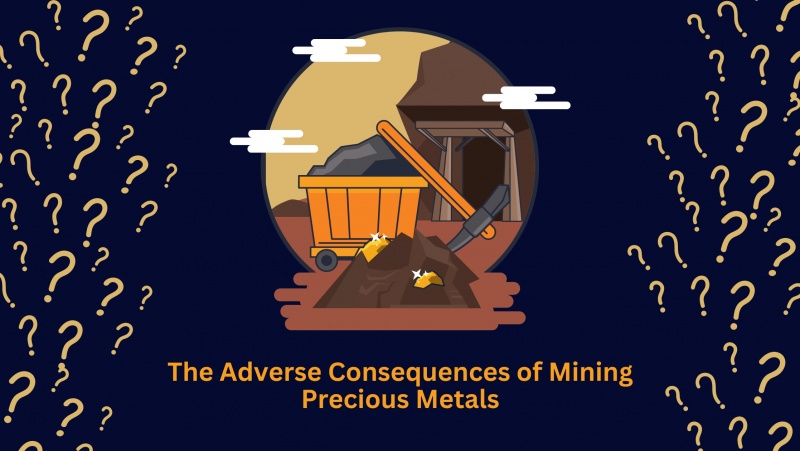Canadian Gold Mining’s Environmental Impact
The Canadian gold mining sector has complicated environmental impacts. Job creation and tax revenue improve the economy. However, mercury contamination harms wildlife and humans.
Mercury is emitted into the air and water when gold is extracted. Bacteria convert it to harmful methylmercury, which enters the food chain. Even in modest levels, fish and their predators collect this.
Consumption Issues: Consumers of infected seafood are more at danger. Fish consumption should be limited during pregnancy because methylmercury can impair a baby’s brain and nervous system. Fishing-dependent indigenous groups are most at risk.
Canada outlawed mercury in gold processing and mining to reduce these effects. Companies must stop its discharge, clean up closed mines, and monitor water systems. For approval, new mines need environmental studies.
Challenges and Progress: Regulations have lowered mercury contamination, but more is needed. Large-scale gold miners employ centrifuges or cyanide, which do not pollute. Small miners utilize mercury because it’s cheap, simple, and plentiful. Some pre-regulation abandoned mines release more mercury than authorized. Canada balances economic growth and environmental conservation with vigilance and enforcement. Preventing long-term damage to people and the earth is paramount.
The world ratified a wide mercury ban accord in 2013. The Minamata Convention was named after a Japanese city where decades of industrial mercury contamination caused neurological illnesses in over 2,200 individuals and poisoned the city’s cats, driving them to leap into the sea. The treaty, which 145 nations, including Suriname, have ratified, banned new mercury mines, closed existing ones, and stopped mercury imports and exports with limited exceptions. Both the US and EU have prohibited most mercury exports.
Protecting People and Ecosystems
Canada prevents neurological harm in children and indigenous people who depend on fish and animals by regulating mercury at the source.
Canada leads mercury mitigation from gold mining with vigilant monitoring and enforcement. Their holistic strategy is a paradigm for nations seeking economic growth and environmental protection. This harmful pollution may be reduced globally through innovation and international cooperation.
Implementing New Technologies to Reduce Mercury Use in Gold Extraction
Many government programs aim to safeguard the people of Canada from mercury exposure.
Cyanide Leaching
In February 2021, UNDP and Indonesia’s Agency for the Assessment and Application of Technology (BPPT) tested leaching tanks for a week. Unlike mercury, cyanide is safer for individuals and the environment. Proper hazardous waste management can lower the toxicity of cyanide.
Concentration Methods
Selectively eliminating lighter particles increases gold concentration in ore or sediment. Concentration techniques can eliminate or considerably reduce mercury use if used properly.
Gold’s high density in ore or alluvium mixtures is used in most concentrating processes. These are gravity techniques. Concentration can be improved by magnetic or chemical qualities.
Each mine is different. Concentration techniques must be chosen based on ore or sediment type, other minerals, gold particle size, and water and electricity availability.
Canada has reduced gold mining mercury pollution through stringent regulation and greener technologies. The sector has a golden future.






